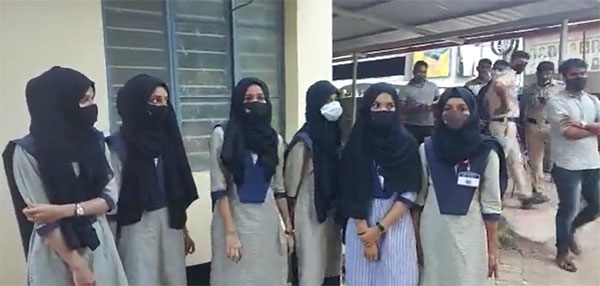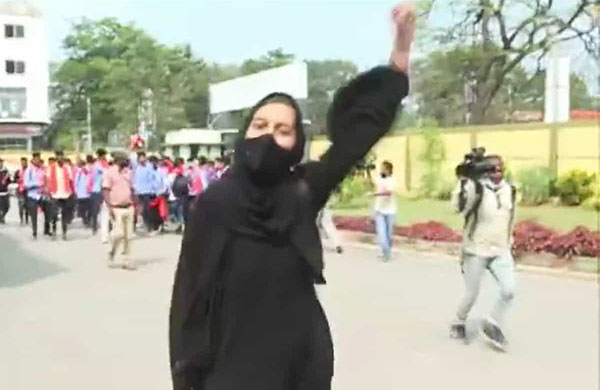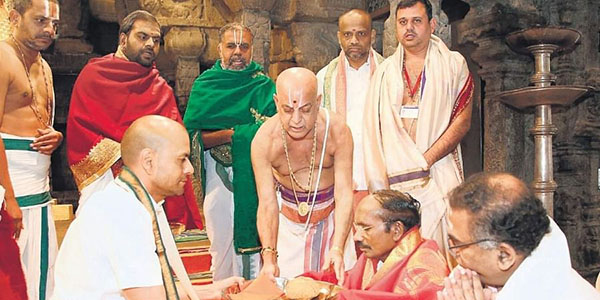Are we a secular nation? Our dilemma
By Philip Mudartha
Bellevision Media Network
Preface:
The so-called hijab row is brewing in Karnataka for several weeks now. In late December last year, six female students of Udupi Government Junior College were denied entry into their classrooms for wearing the hijab. Hijab is headscarf worn by many Muslim women and girls in public places.

The college said that Hijab went against its dress code. The girls protested and stood their ground. They approached the school authorities, district commissioner, and education department officials. Their grievances were not heard with empathy.
The government junior college is supervised by a development committee which is headed by the local MLA, Raghupati Bhat of BJP. There are no surprises that the development committee holds partisan views. Bhat has claimed that he tried to resolve the matter by speaking to the parents without success. He has alleged that Campus Front of India (CFI) is instigating the students.
CFI is the student wing of Popular Front of India (PFI) which is the Muslim socio-cultural outfit of Social Democratic party of India (SDPI). The influence of SDPI in coastal districts is on the ascendancy which is in response to the increasing hold of Hindutva over local populations.

In response, several other colleges in the state came out with the same diktat. The right-wing BJP government of Karnataka backed the colleges’ stand, and since then, there have been widespread protests in the state for and against Muslim girls’ right to wear the hijab in educational institutions. Anti-hijab demonstrators bedecked in saffron scarves, the mark of their Hindu religious identity, have come in thousands. They are mobilized by the saffron Parivar and are singularly focused on preventing Muslim girls from accessing education if they wear Hijab.
The Udupi junior college girls then filed a petition in the Karnataka High Court pleading for an order to allow them to attend classes with the Hijab. The one-judge bench which heard the matter referred it to a larger bench headed by the Chief Justice. The three-judge bench began hearings on Wednesday, 9th February and listed the matter to be heard on Monday, 14the February. The issued an interim order and said: "We will pass an order. Let the schools-colleges start. But till the matter is resolved, no student should insist on wearing religious dress.
The international outcry as hijab protests spread in India:
The protests have since spread to other cities. Scores of students took to the streets in Delhi holding placards and shouting slogans to express their anger at the ban. And hundreds more have protested in Kolkata and Hyderabad, reports CNN international.
The international media is covering the Hijab row with regular updates. BBC and Al-Jazeera in particular run regular updates with photographs of both the Hijab wearing teenage Muslim girl students and the opposing saffron scarves wearing Hindu boys. The video of a lone Muslim girl student of a college in Mandya district being heckled by a group of saffron scarves wearing Hindu boys went viral on social media. The Hindu boys are shown shouting Jai Shri Ram. In response, the girl shouts back: Allahu Akbar, as she pumps her fists in air in defiance.

Almost every international media has broadcast the video and have run commentaries on the “attempts to marginalize the Muslim minority since PM Modi came to power in May 2014. The image of India as a liberal and secular democracy has taken a beating in the international arena due to the frequent hate speeches of firebrand BJP politicians and the nation-wide “atmosphere of hatred” created by the saffron Parivar.
International media analysts and socio-political activists say the hijab row is yet another example of a broader trend in India -- one that has seen a crackdown on India’s minority Muslim population since PM Narendra Modi’s BJP came to power.
They say that by denying Muslim women the choice to wear the hijab, the government is denying them their religious freedoms, enshrined in the Indian constitution. Article 25 of the Constitution guarantees freedom of religion to all individuals. It says: "All persons are equally entitled to freedom of conscience and the right to freely profess, practice, and propagate religion subject to public order, morality and health."
"This is a massive attempt by the BJP to homogenize Indian culture, to make it a Hindu-only state," say protesting Muslim activists, "Muslim women are isolated in India. And the situation is getting worse every day."
On Tuesday, Nobel Peace Prize winner Malala Yousafzai, called the hijab row "horrifying." "Objectification of women persists -- for wearing less or more. Indian leaders must stop the marginalization of Muslim women," she tweeted. Malala is an influencer and enabler of international public opinion whose tweets India could ill-afford to ignore.

Indian model of secularism:
Let’s us begin with the classical definitions of secularism.
1. According to Merriam Webster: Secularism is indifference to or rejection or exclusion of religion and religious considerations.
2. According to Oxford Dictionary: It’s the belief that religion should not be involved in the organization of society, education, etc.
3. According to Cambridge Dictionary: Secularism is the belief that religion should not be involved with the ordinary social and political activities of a country.
4. According to Collins Dictionary: It is a system of social organization and education where religion is not allowed to play a part in civil affairs.
In other words, secularism is defined as an idea, belief or system that separates religion from State affairs. It’s different from atheism or agnosticism because secularism seeks to defend the absolute freedom of religion and other beliefs, and protect the right to manifest religious beliefs in so far as it does not impinge on the rights and freedoms of others. So, the broad idea is that secularism protects the rights of individuals to practice any or no religion but State and Statecraft should be separate from it.
Unfortunately, Indian Secularism is not defined in our constitution. The word “secular” was inserted in the preamble by 42nd Amendment, enacted on 18th December 1976 during the emergency rule.
According to Wiki, the Supreme Court of India in the 1994 case S. R. Bommai Vs. Union of India established the fact that India was secular since the formation of the republic. The judgement established that there is separation of state and religion. It stated "In matters of State, religion has no place. And if the Constitution requires the State to be secular in thought and action, the same requirement attaches to political parties as well. The Constitution does not recognize, it does not permit, mixing religion and State power. That is the constitutional injunction. None can say otherwise so long as this Constitution governs this country. Politics and religion cannot be mixed. Any State government which pursues nonsecular policies or nonsecular course of action acts contrary to the constitutional mandate and renders itself amenable to action under Article 356". Furthermore, constitutionally, state-owned educational institutions are prohibited from imparting religious instructions, and Article 27 of the constitution prohibits using tax-payers money for the promotion of any religion.
Despite the clarity of the above SC judgement, in practice both the governments and political parties have mixed religion with politics. Even the highest judiciary is confused since it entrusted the construction of Ayodhya Ram Temple to a government-owned trust. The Muslim Women (Protection of Rights on Marriage) Act, 2019, popularly called Triple Talaq Act, enacted by the parliament is the latest example of state power interfering in religious practices. That PM Modi presided over the Bhoomi-puja of Ayodhya Ram Temple and performed the rituals as the head of the government is another example of mixing religion with State.

Of late, the word and the idea of secularism are understood as “Sarva Dharm Samabhava”, or equal treatment to all religions. In a country where 80% of the population tells the census enumerators that they are Hindu, this idea of “all religions equal” is in reality “majoritarian domination by Hindus”.
Our dilemma:
Nobody questions when a government functionary breaks a coconut while inaugurating a flyover or an airport or even commissioning a frigate or a warship. It has been a practice that whenever the ISRO launches a satellite, its chief - who as a scientist is expected to be a “rationalist” - pays obeisance at the Tirupati temple. It is an undisputable fact that the Indian State and its practices are blatantly and overtly Hinduized.

This dilemma did not start with the political ascendancy of BJP. However, during Congress rule, there was an agreement and unwritten contract with the minority that they will have their limited say, and can still profess their religion and way of life, provided they accepted the hegemonic position of the Hindus.
After the ascent of the BJP, that contract is fraying. The Hijab controversy in Karnataka is one of the manifestations of its breakdown.
 Write Comment |
Write Comment |  E-Mail To a Friend |
E-Mail To a Friend |
 Facebook |
Facebook |
 Twitter |
Twitter |
 Print
Print 


















